10 Facts You Didn’t Know About Anthony van Dyck
Anthony van Dyck, a Flemish Baroque painter of remarkable skill, left an indelible mark on art history. His signature style of refined portraits and...
Jimena Aullet 24 October 2024
These five Baroque female painters greatly impacted art: Artemisia Gentileschi, Judith Leyster, Giovanna Garzoni, Lavinia Fontana, and Mary Beale. While each artist was a master of a different technique, they all had one thing in common – they were female painters. During a time when art was a male-dominated field, these women proved their art was just as powerful, if not more.
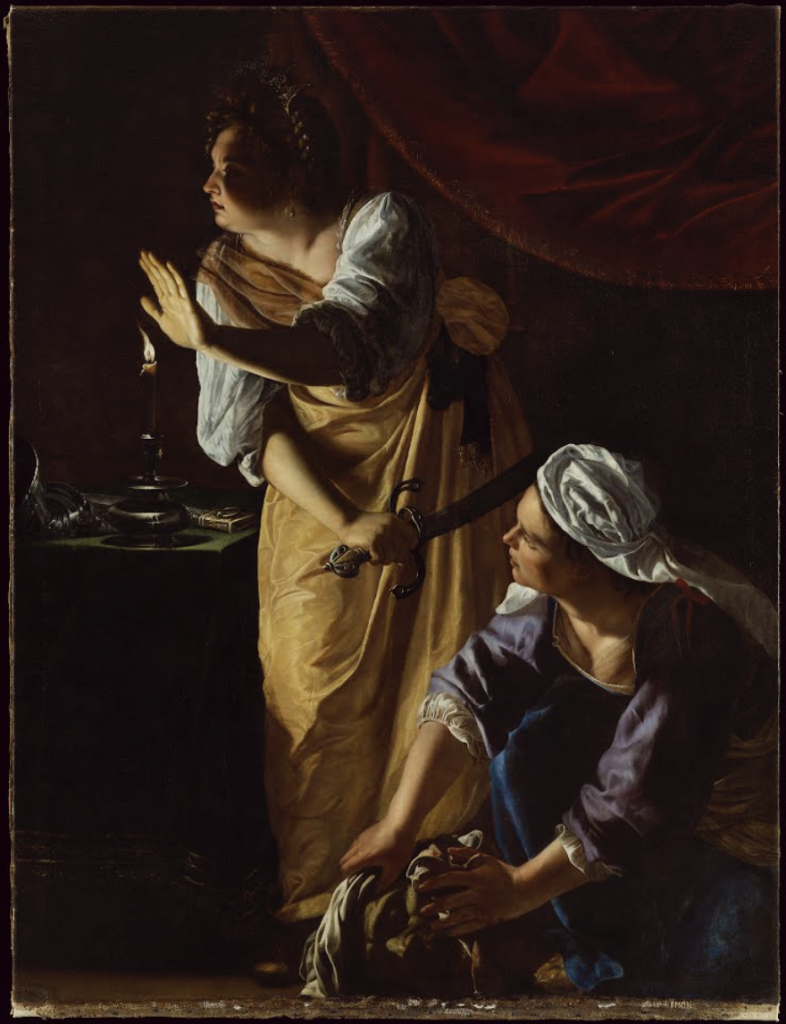
5 Greatest Baroque Female Painters: Artemisia Gentileschi, Judith and her Maidservant, ca. 1623-1625, Detroit Institute of Arts, Detroit, MI, USA.
First, Artemisia Gentileschi (1593-1656) was an Italian Baroque female painter born in Rome, Italy. She mainly painted scenes of women from the Bible but also from mythology. Although she was a woman in a male-dominated field, she made quite an impact on Italian art. Due to her father’s profession as an artist, she grew up learning how to paint in his workshop. Most of her work is inspired by Caravaggio, which is seen through her naturalistic style.
But what made Gentileschi one of the greatest female Baroque painters? Well, instead of depicting women in a fragile way, like her male contemporaries, she portrayed women with strength. One such example is Judith and her Maidservant, from 1625 at the Detroit Institute of Arts. In this painting, Caravaggio’s influence is represented through her theatrical use of lighting.
However, Gentileschi was not the only female artist working at this time. Judith Leyster was another great Baroque painter.
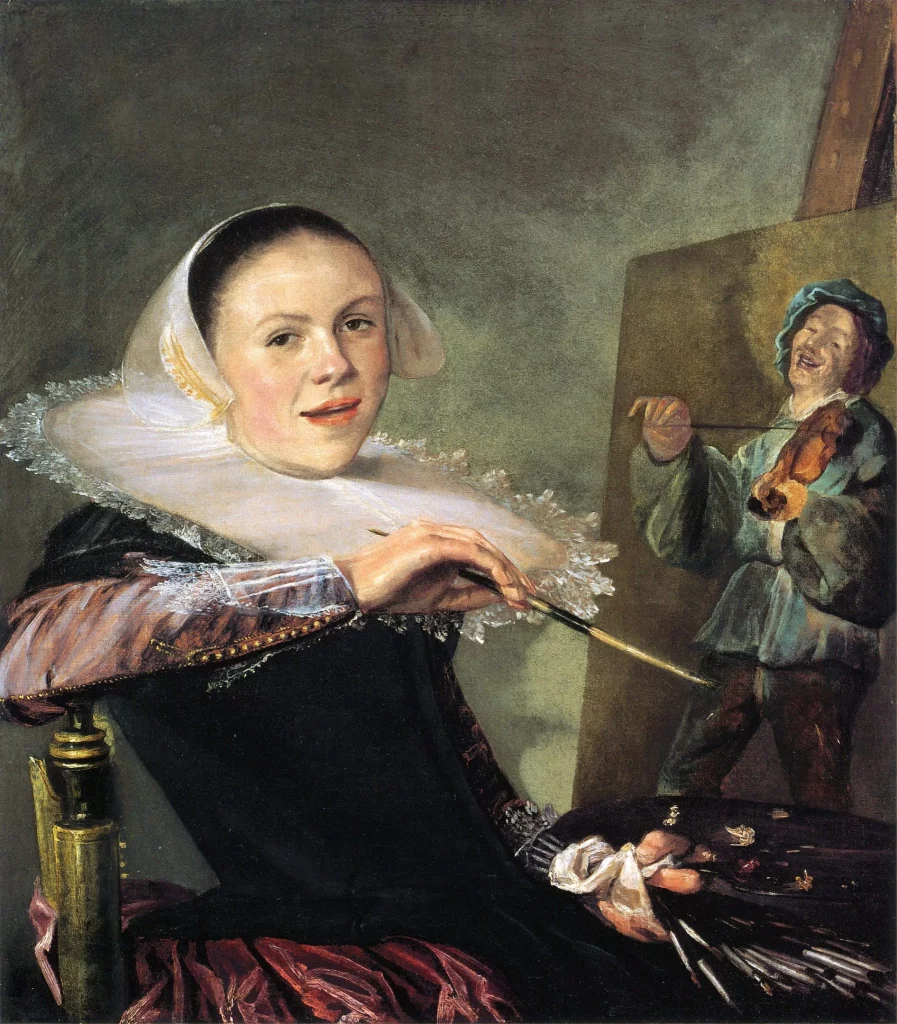
5 Greatest Baroque Female Painters: Judith Leyster, Self Portrait, c. 1630, National Gallery of Art, Washington, DC, USA.
Next up is Judith Leyster (1609-1660), a Dutch female painter who was highly regarded during her career. Unlike Gentileschi, Leyster’s father was not a painter. Leyster trained with Frans Pieter de Grebber, a local landscape painter and portrait artist living in Haarlem, Holland. Although, early on in her career her work was widely unknown. Then in 1633, Leyster was the first woman allowed to join the Saint Luke’s Guild of Haarlem. According to the National Gallery’s website, by 1635 she taught at least three students in the guild.
Her most celebrated work is her Self Portrait, made in 1630, now at the National Gallery of Art in Washington, DC. In this work, she presents herself as a skilled painter by including a palette and paintbrush in her hands. Her formal attire juxtaposes her casual facial expression as if she is in mid-conversation. Her painting is powerful, and her gaze aimed directly at the viewer asserts her dominance as a painter.
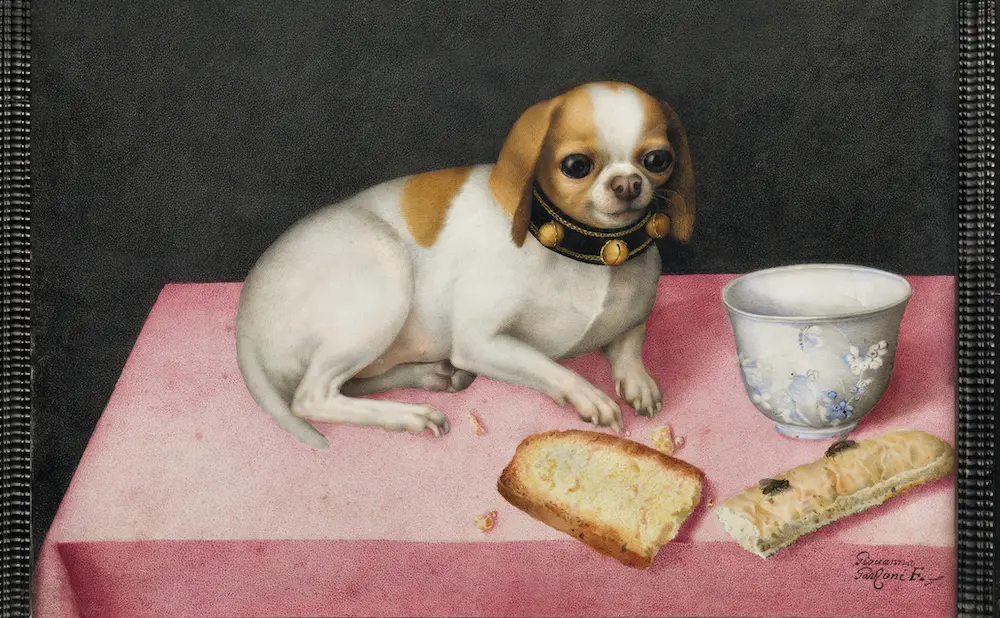
5 Greatest Baroque Female Painters: Giovanna Garzoni, Dog with a Biscuit and a Chinese Cup, ca. 1640. Palazzo Pitti, Florence, Italy.
Equally important is Giovanna Garzoni (1600-1670), one of the first female painters to specialize in still life and best known for her watercolor paintings. Garzoni was an Italian Baroque artist who painted various subjects such as plants, animals, insects, and more. Interestingly she also studied scientific illustrations, which led to her precise depictions of objects in her paintings. Her creative combinations of still-life objects set her apart from the other four Baroque female painters. For instance, she would include a portrait of a dog on a table next to Asian porcelain rather than the typical floral arrangement painted by male artists.
Remarkably, Garzoni was famous during her lifetime and is rumored to have been a favorite artist of the Medici family in Florence. Due to her success, she was fortunate enough to travel to Europe, where she probably met fellow female painters Artemisia Gentileschi and Fede Galizia.
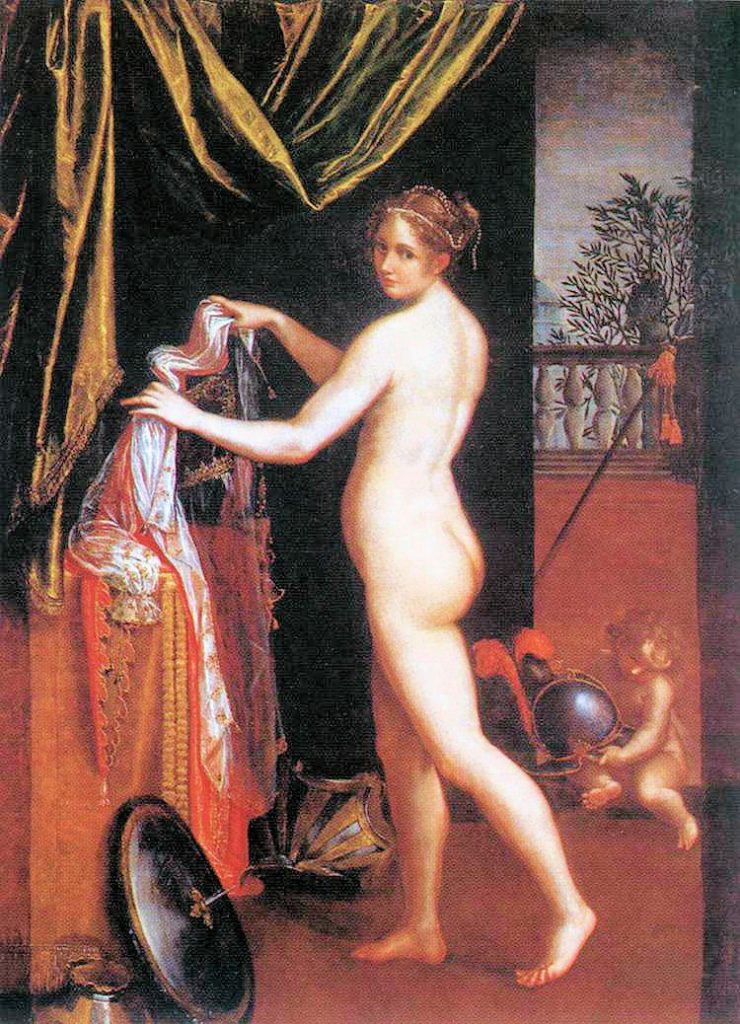
5 Greatest Baroque Female Painters: Lavinia Fontana, Minerva Dressing, c. 1613, Galleria Borghese, Rome, Italy. Wikimedia Commons (public domain).
Lavinia Fontana (1552-1614) was a Bolognese Mannerist painter best known for her portraiture. Like other female painters, she was trained by her father, Prospero Fontana. Art historians have suggested she was the first professional female artist without ties to the court (like Giovanna Garzoni). Because Fontana relied commissions of her paintings as income, her husband was her business agent who helped sell her paintings.
Furthermore, she might have been the first female artist to paint female nudes. Although this is widely disputed, her work Minerva Dressing proves otherwise. The accreditation is controversial due to the social life of women during this time. In Fontana’s life, it was socially unacceptable for women to be exposed to nudity by strangers. Instead, art historians suggest she had family members pose for her instead of models. Regardless, Fontana was a trained painter who created successful portraits.
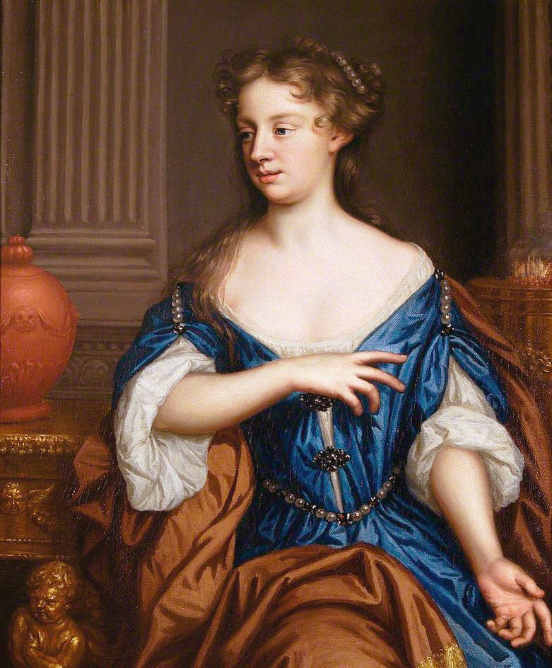
5 Greatest Baroque Female Painters: Mary Beale, Self Portrait, c. 1675. Wikimedia Commons (public domain).
Last but certainly not least, Mary Beale (1633-1699) was England’s first professional female portrait artist. Like Lavinia Fontana, Beale also supported her family through commissioned portraits. By the time she was in her late 20s, she had gained a reputation as a painter and became friends with Sir Peter Lely, the court painter to King Charles II of England. Luckily she was able to observe Lely in his studio, where she copied many of his portraits.
What sets Mary Beale apart from the other four painters is that she had no formal art training. Instead, she had a general education, which probably led her to write. In 1663 she wrote a manuscript on the instruction of painting apricots using oils called, Observations. Beale was the first female artist to write about the act of painting.
By 1677, she reached the height of success when she was commissioned to create 83 paintings. While earning a living she also taught students, mainly other women such as Keaty Trioche and Sarah Curtis.
Helen Draper. “‘Her Painting of Apricots’: The Invisibility of Mary Beale (1633–1699).” In Forum for Modern Language Studies, vol. 48, no. 4, pp. 389-405. Oxford University Press, 2012.
Mary D. Garrard. “The Not-So Still Lifes of Giovanna Garzoni.” The Immensity of the Universe” in the Art of Giovanna Garzoni: 66-67.
DailyArt Magazine needs your support. Every contribution, however big or small, is very valuable for our future. Thanks to it, we will be able to sustain and grow the Magazine. Thank you for your help!